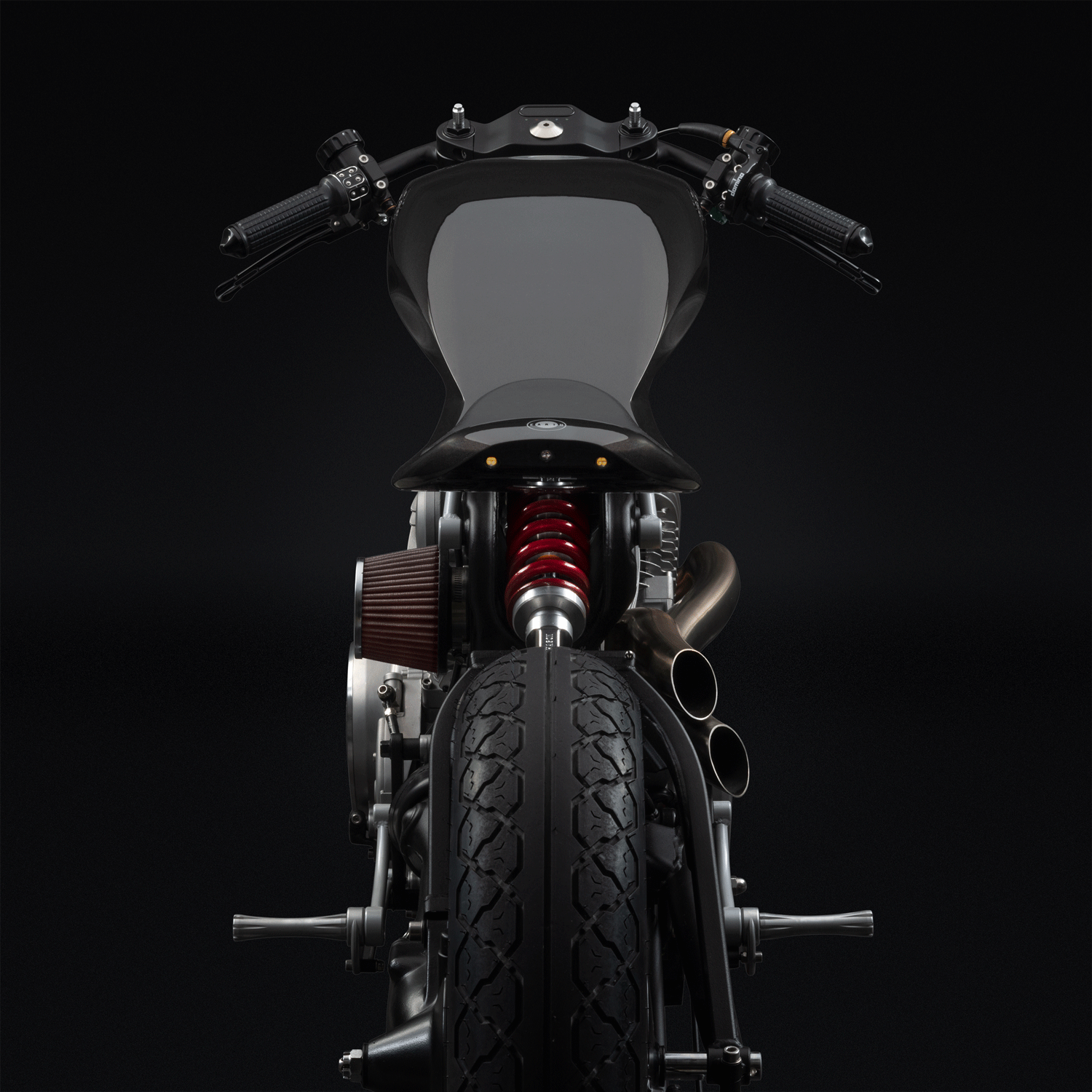
EARTH MOTO – FUJARA
BASED ON YAMAHA XV920 1984
Imagine a unique bike, combining an unchained power of a V-twin engine, with a sound of thunderstorm, coming from straight pipes, reminding old native flutes. All that packed in a subtle body, designed to flow like a wing of a falcon in the air. That is Fujara.
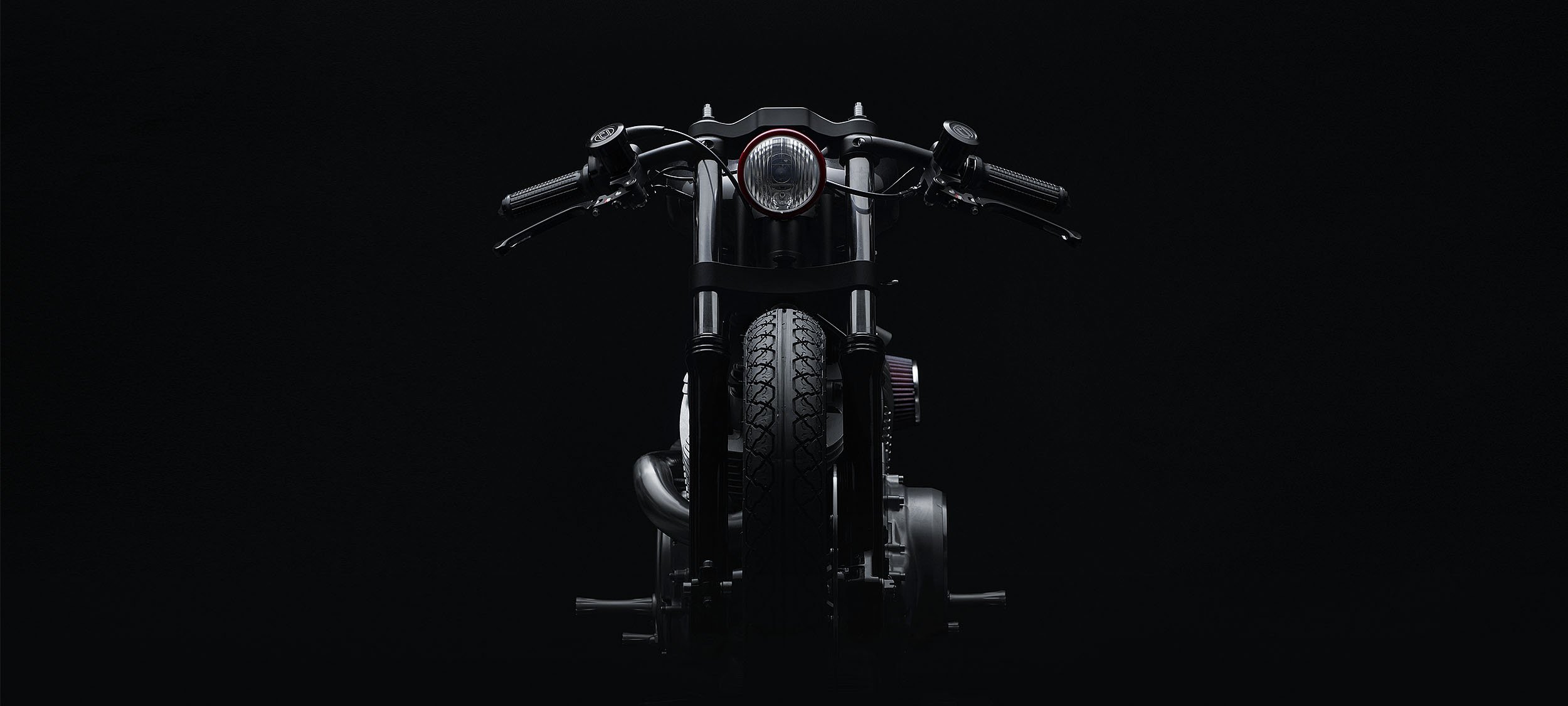
Cafe racer, but not exactly a cafe racer. Bobber, but not a bobber, indeed. Fujara creates its own category. Urban community bike with a one-off modern design and a heart of an old-school warrior.





Simple, pure lines working together in harmony, creating unique entity.
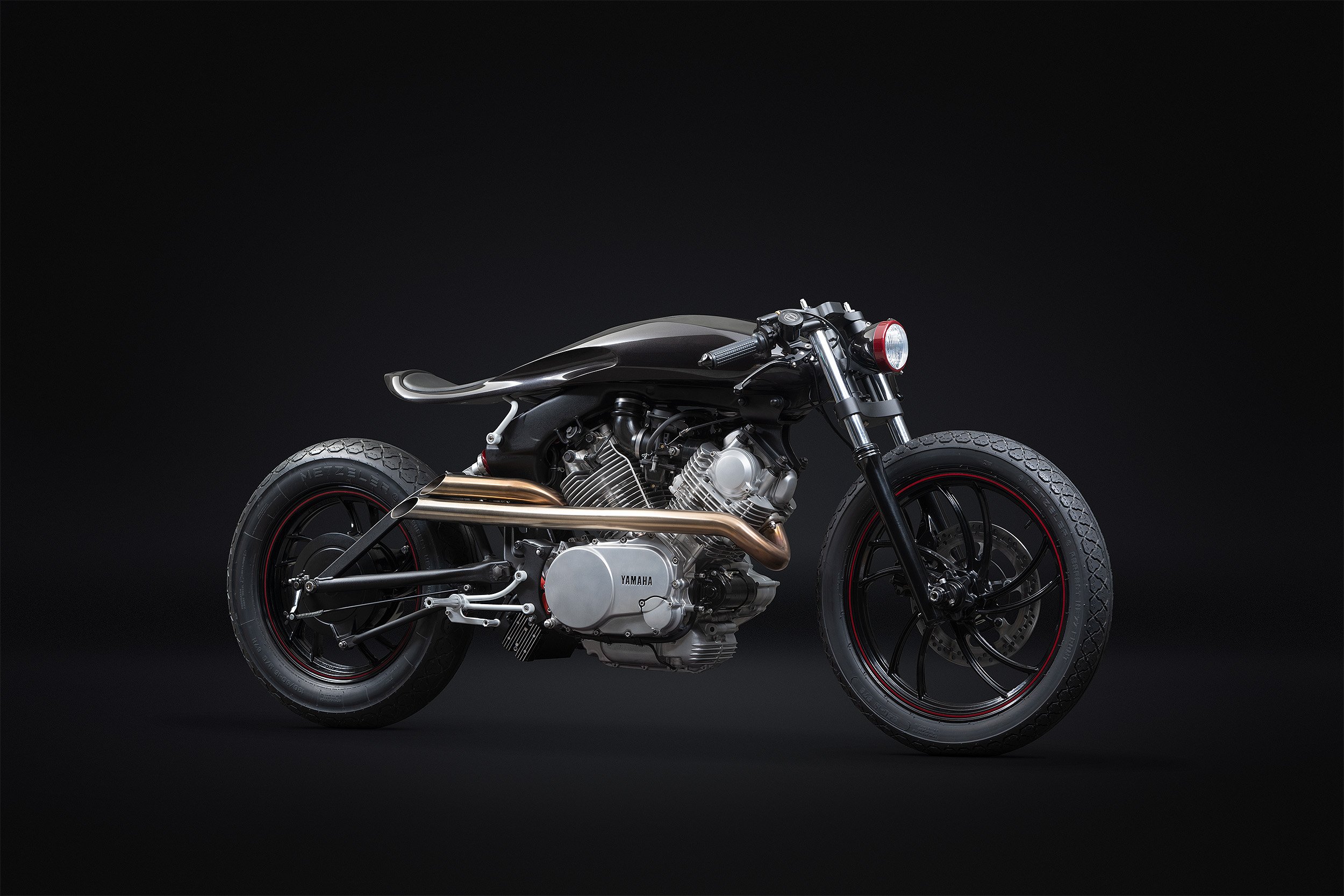

The dynamic shape of the cockpit results in an ergonomic-shaped seat with integrated lights and turn signals. It gives you a feeling of a hidden alien from another galaxy.

FLYING WING OF A FALCON
A simple idea of a single tight curve with a peak above the engine and two tangents with the wheels, became the design mantra for Fujara. The tight curve then transformed to a brilliantly designed tank-and-seat monocoque in a shape of a wing, supporting the Earth Motorcycle philosophy “between Earth and Sky”
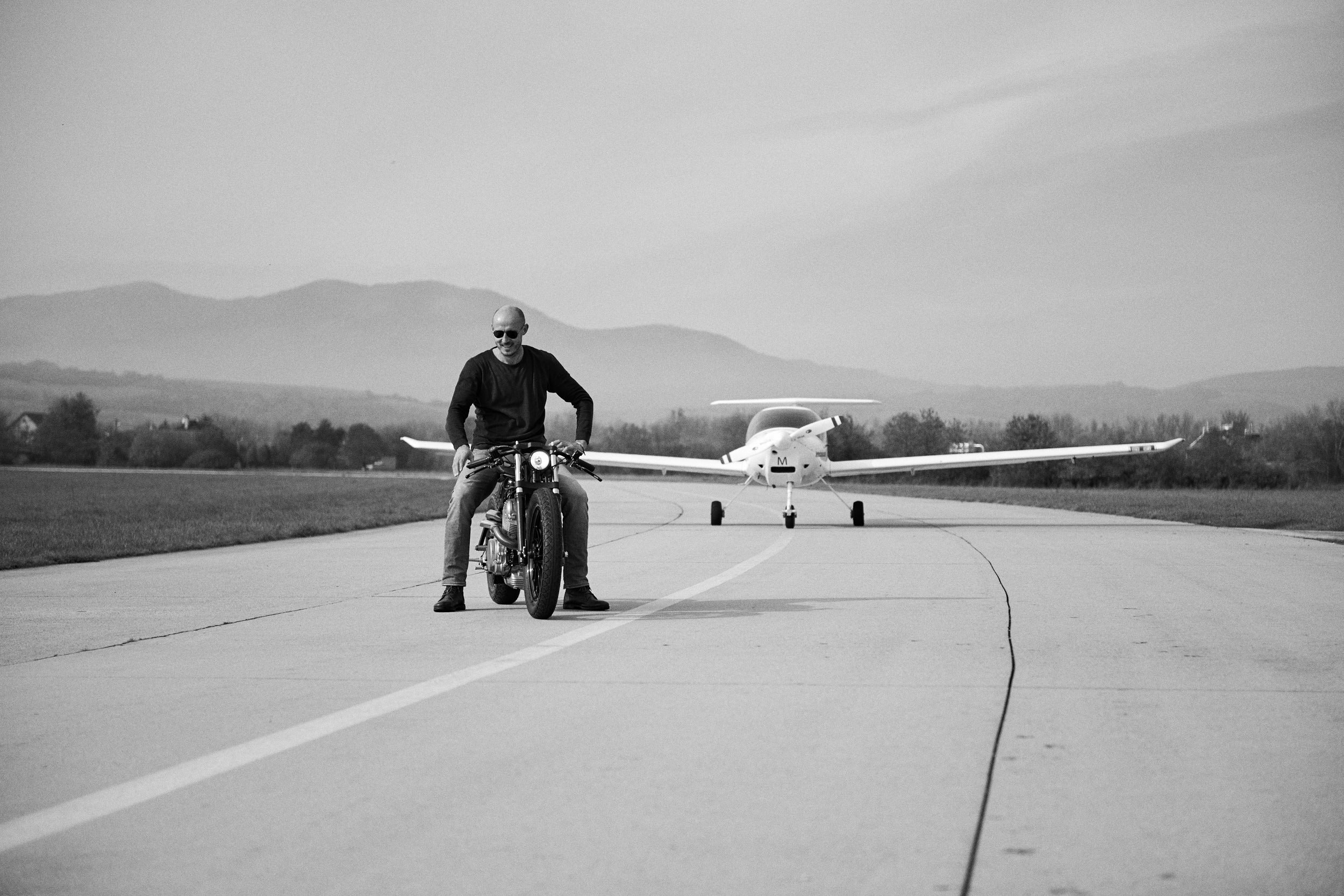






YOUR DAY WITH FUJARA
Imagine, it’s sunny morning. The land is bathed in the sun. You’re approaching this unique piece of art. Grasp the grips and get seated. Immediately you feel the connection. You are becoming a part of this flying wing. Push the start button and sense the V-power, carrying the subtle, air-light construction. Kick the gear and fly. Let the freedom guide you

GET SEATED AND BECOME A PART OF THE FLYING WING. KICK THE GEAR AND FLY.








BEHIND THE SCENES
People see most of the bike customization projects only when they are finished. They can hardy imagine the work and effort behind the built. Fujara was the most complex project we have ever done, involving many different people from various professions. It took over 600 hours to built. But it all paid off. And it all started with a single idea.

Back in 2017, Earth motorcycles approached an industrial designer Konstantin Laskov from Sofia, Bulgaria to design a unique bike, based on Yamaha XV920. The V-twin mounted from above, giving the engine somewhat levitating feel, together with the curved frame, indicated a great design potential.
The design brief to Konstantin was to come with a subtle shape, contrasting with the big engine, respecting the mentioned core of the bike – the floating engine and the curved frame. On philosophical level, the request was to follow three keywords – freedom, wind and air. Konstantin came with tons of sketches and finally delivered a simple idea of a single tight curve with a peak above the engine and two tangents with the wheels. This became our design mantra.

Hundreds of sketches followed. Almost invisible differences were taken into consideration. And then, after few months of designing, we came to the final shape. The shape of a wing on wheels.
The project Fujara required a 3D model of the entire motorcycle. Of course, it was not possible to buy or obtain a technically accurate 3D model of a bike made in 1984. So, it was necessary to scan the frame with an industrial scanner, and only then, the creation in 3D could begin.
Konstantin remodeled the scanned bike, so that we could see a clean render, once he finished the design. He modelled every single fitting, every screw, every custom part. That allowed us to go on with fabrication of custom parts.

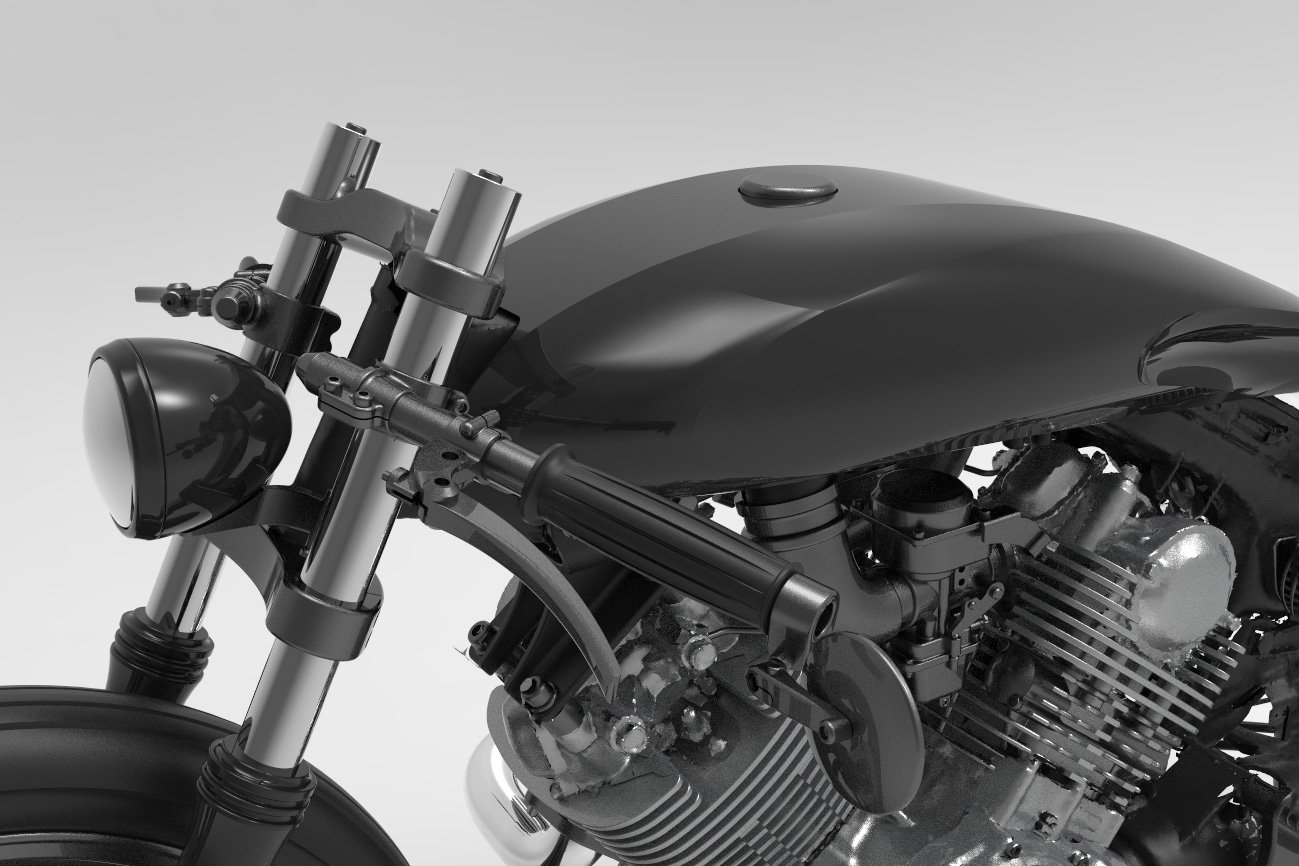
The trickiest part of the bike, technical wise, was the cockpit. We were looking for the most suitable repeatable technology – from milling, thru casting, 3D printing, to a final technology, which was fiberglass molding.
The very first step was a 3D-printed pre-production tank. The problem, however, was that there was no such a 3D printer able to print such a long piece at once. So, it had to be divided in 4 pieces, printed individually and then glued together. This first sample allowed us to test whether the frame was not limiting us somewhere, as well as whether the monocoque fitted ergonomically and visually with the bike.
After several iterations, we made a positive wooden mold first, serving as a base for a final negative mold. Then, we were ready to make the cockpit.

The cockpit was made of special fiber glass and epoxy, resistant to gasoline. The layers of fiber glass had to be laid down in a specific pattern, to maintain durability and flexibility. Once the shell was done, the metal parts, such as inner threads or the gasoline cap housing, were glued in. One more fiber glass layer, hardening and hours of sanding. After that, painting prep and a visit of a paint shop. The cockpit is done and ready to be mounted.






“A WINNER IS A DREAMER WHO NEVER GIVES UP.”
— Nelson Mandela —

Just like with every engine in our workshop, also the XV920 was completely disassembled, cleaned, overhauled, painted and carefully assembled.



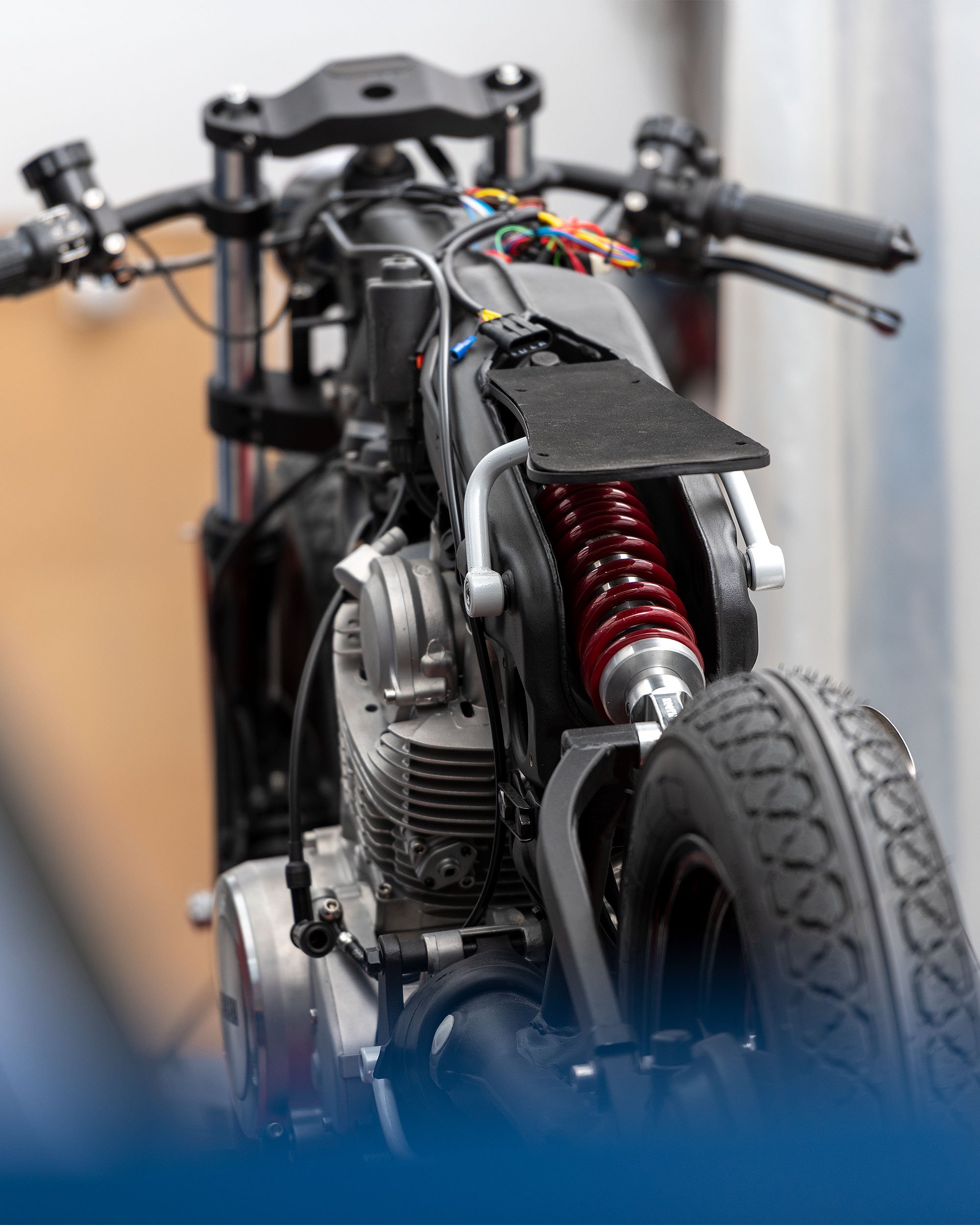

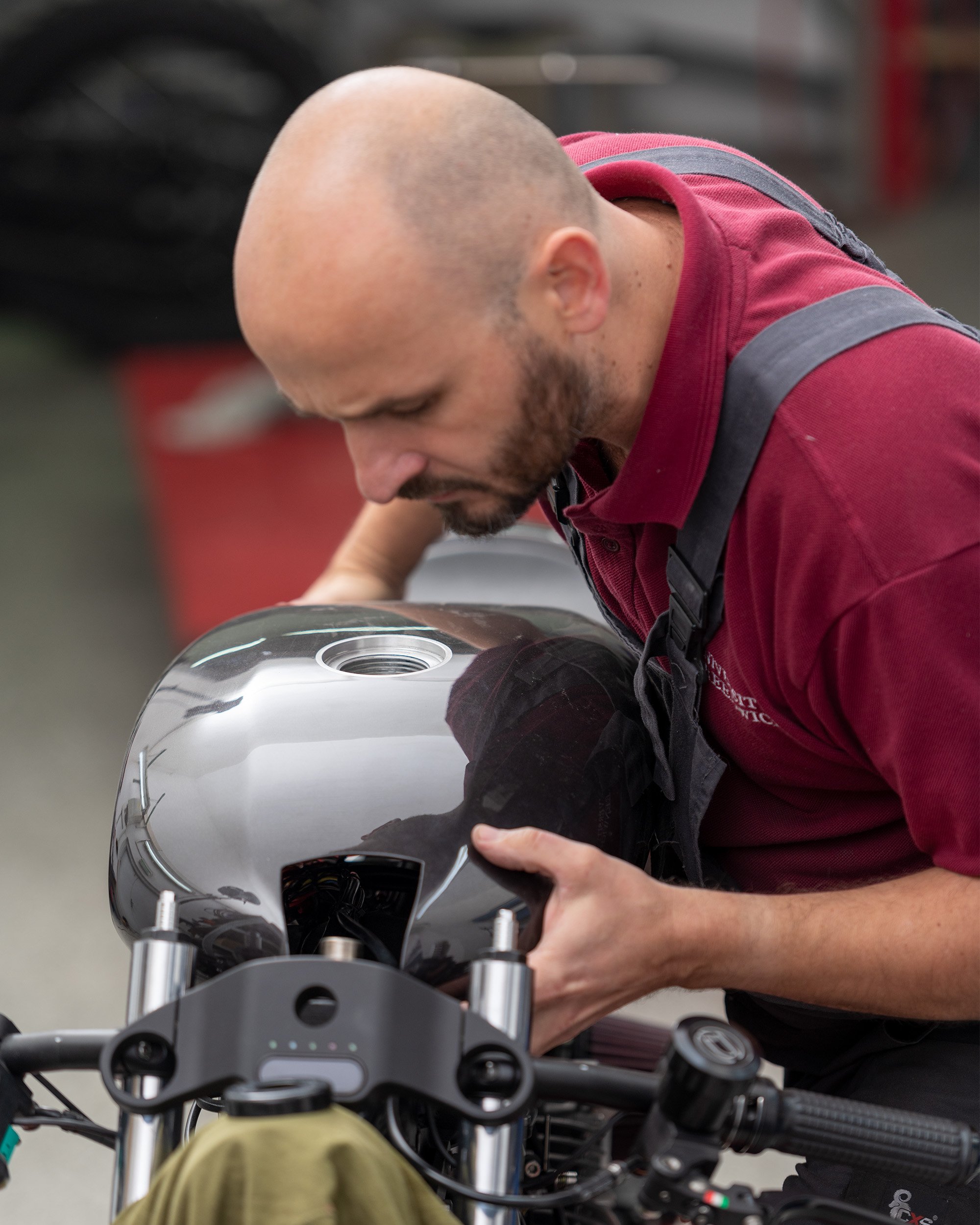
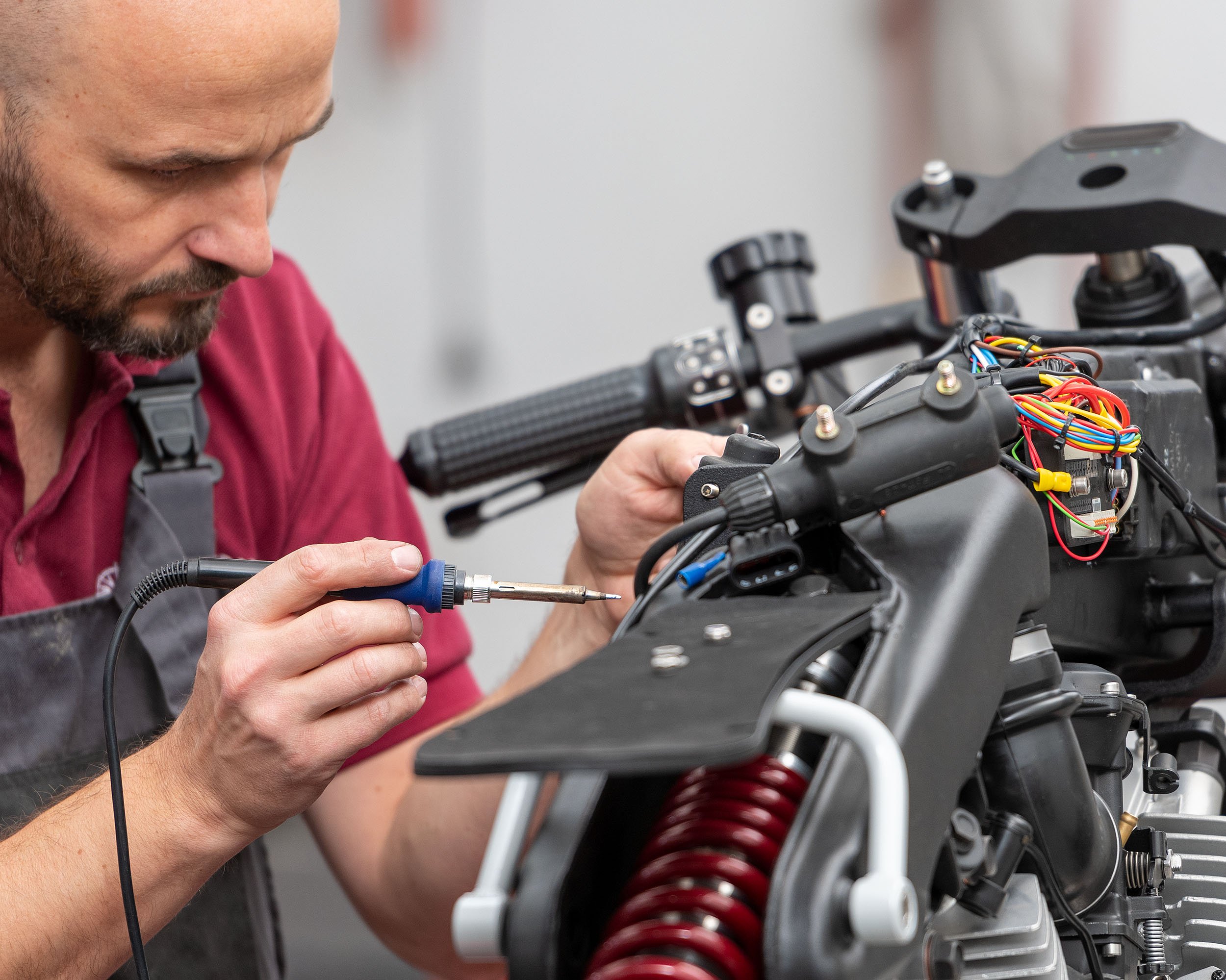
“HUMAN CRAFT AND HOURS OF PASSION GAVE BIRTH TO A UNIQUE BIKE, SOUNDING LIKE THUNDERSTORM AND FLOWING LIKE A FALCON IN THE AIR.”
— EARTH MOTORCYCLES —

SPECIFICATION
Weight - 172kg
Seat height - 75cm
Frame and swingarm:
- frame lowered by 10cm
- Special Earth Moto seat subframe
- shaved from all the unused brackets
- powder coated frame
- Special Earth Moto CNC aluminum footpegs
- shortened side stand
Forks and shock:
- fork shortened by 15cm
- Special Earth Moto CNC triple clamp
- fork completely rebuilt
- professionally powder coated
- new rear shock Hagon
Wheels and steering:
- new tires
- powder coated rims
- new steering bearings
Tank and seat:
- Special Earth Moto fuel tank made of fiberglass with integrated rear lights
- Special Earth Moto CNC aluminum fuel cap
- professionally coated using a 2k technology
- Special Earth Moto seat
Engine, gearbox, and transmission:
- engine cleaned from inside out
- new gaskets, grommets, seals etc…
- engine sandblasted with fine glass beads and vapor blasted
- checked for excessive wear
- Special Earth Moto 50mm stainless steel exhausts
Fuel and air system:
- new fuel tap
- vapor blasted and ultrasonic cleaned carburetors
- new seals and gaskets everywhere
- new air pod filter
Brakes:
- renewed and painted calipers
- new Venhill hoses, stainless steel banjo bolts and bleeders
- new Discacciati master cylinders and levers
- new front disc
Electric:
- renewed internal engine wiring harness, contacts cleaned
- new outside wiring harness
- Motogadget M-unit Blue with alarm and keyless ignition and many more features
- Aliant LiFePo4 14Ah battery
- new Lifepo4 friendly regulator
- Motogadget Mini speedometer
- Motogadget pushbutton controls
- Motogadget front indicators, CE certified
- Highsider Proton rear indicators, CE certified
- new horn
- new spark high voltage cables and spark plugs
- new front classic headlight, CE certified
Fluids:
- new fork oil, engine oil, gearbox oil, transmission oil and brake fluid DOT 4
Almost all old bolts, washers and nuts were replaced with stainless steel ones. All rusted or broken parts were cleaned, repaired, or replaced with new ones.
